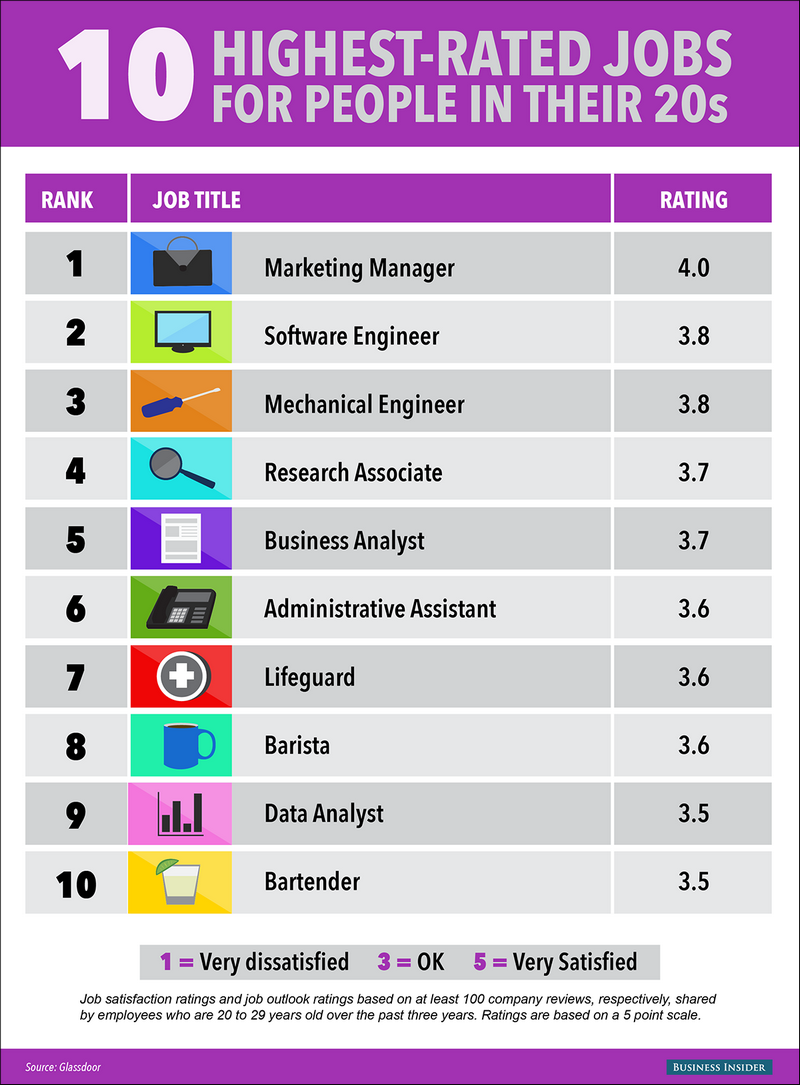
How To Be a Good Electrician – 9 Things Every Sparky Should Know
Hello! How can I assist you today?
2. Stay Updated with Electrical Codes and Regulations
As an electrician, it is crucial to stay updated with the latest electrical codes and regulations to ensure compliance and maintain safety standards. By staying informed about these guidelines, you can perform your work efficiently and minimize the risk of accidents or code violations.
Here are some key points to consider:
- Regularly Access Official Electrical Code Documents: Familiarize yourself with the electrical codes published by relevant authorities such as the National Electrical Code (NEC), International Electrotechnical Commission (IEC), or local regulatory bodies. These documents provide comprehensive guidelines on electrical installations, wiring standards, safety protocols, and more.
- Attend Code Update Seminars and Workshops: Participate in industry-specific seminars and workshops that focus on the latest updates and revisions in electrical codes. These events often feature experts who provide insights into new requirements and best practices.
- Join Professional Associations: Become a member of professional associations dedicated to electrical work, such as the National Electrical Contractors Association (NECA) or the International Association of Electrical Inspectors (IAEI). These organizations often offer resources, training programs, and networking opportunities that keep you informed about code changes.
- Follow Online Resources and Publications: Stay connected with online platforms, websites, and publications that regularly publish articles, newsletters, or forums related to electrical codes and regulations. These sources can provide valuable updates, interpretations, and discussions on code-related topics.
- Collaborate with Peers: Engage in discussions with fellow electricians or professionals in the industry to exchange knowledge and experiences regarding code compliance. Sharing insights and lessons learned can help you stay abreast of new requirements and gain practical perspectives.
Remember, staying updated with electrical codes and regulations demonstrates your commitment to safety, professionalism, and the highest standards of electrical work. It ensures that your installations meet legal requirements and safeguard the well-being of both yourself and your clients.
3. Practice Safety at All Times
Ensuring safety is paramount for every electrician. By practicing strict safety measures, you protect yourself, your colleagues, and the clients you serve. Here are important guidelines to follow:
3.1 Use Personal Protective Equipment (PPE)
Personal Protective Equipment (PPE) is crucial in safeguarding against electrical hazards. Make sure to use the following PPE:
- Insulated gloves and sleeves
- Safety glasses or goggles
- Protective clothing
- Non-conductive footwear
- Hard hat
- Hearing protection
3.2 Follow Lockout/Tagout Procedures
When working on electrical systems, it’s essential to follow lockout/tagout procedures to prevent accidental energization. These procedures involve:
- Identifying energy sources
- Applying lockout/tagout devices
- Verifying electrical isolation
- Performing tests to ensure de-energization
3.3 Implement Proper Ladder Safety
Working at heights requires adherence to ladder safety protocols. Here are some key points to remember:
- Inspect ladders for damage before use
- Ensure proper ladder placement on stable surfaces
- Maintain three-point contact while climbing
- Avoid overreaching and leaning to maintain balance
- Use ladder accessories, such as stabilizers and leg levelers, when necessary
By following these safety practices, you minimize the risk of electrical accidents, injuries, and fatalities. Safety should always be your top priority as an electrician, as it ensures a secure working environment for yourself and those around you.
3.1 Use Personal Protective Equipment (PPE)
When working as an electrician, using Personal Protective Equipment (PPE) is essential to ensure your safety and minimize the risk of electrical accidents. PPE provides a crucial barrier between you and potential electrical hazards. Here are some key points to consider:
Why is PPE important?
PPE serves as a protective shield, safeguarding you from various electrical hazards, such as electrical shock, burns, and arc flashes. It acts as a crucial line of defense in potentially dangerous situations.
Types of PPE for Electricians
Here are common types of PPE that electricians should use:
- Insulated Gloves: Insulated gloves provide protection against electrical shock while working with live electrical components.
- Safety Glasses or Goggles: Safety glasses or goggles protect your eyes from sparks, debris, and chemical substances.
- Protective Clothing: Wear flame-resistant clothing and coveralls to protect your body from arc flashes and potential fire hazards.
- Non-Conductive Footwear: Insulated and non-conductive footwear prevents electrical conductivity and protects against electric shock.
- Hard Hat: A hard hat protects your head from falling objects and potential electrical hazards in construction or overhead work.
- Hearing Protection: Earplugs or earmuffs help protect your ears from excessive noise levels generated by electrical equipment.
Guidelines for Using PPE
When utilizing PPE, it’s important to follow these guidelines:
- Inspect PPE regularly for any damage or wear and tear.
- Ensure proper fit and sizing of each PPE item.
- Use PPE in accordance with the manufacturer’s instructions.
- Wear the appropriate PPE for specific tasks and hazards.
- Store and maintain PPE properly to prolong its effectiveness.
Remember, using personal protective equipment is a critical aspect of electrical safety. By employing the appropriate PPE, you minimize the potential risks associated with electrical work and create a safer working environment for yourself and your colleagues.
3.2 Follow Lockout/Tagout Procedures
Following proper lockout/tagout procedures is crucial for maintaining safety when working on electrical systems. Lockout/tagout is a set of practices and procedures designed to protect workers from hazardous energy sources. Here’s what you need to know:
What is Lockout/Tagout?
Lockout/Tagout (LOTO) is a safety procedure used to ensure that energy sources are isolated and rendered inoperative before electrical work is performed. It involves the following steps:
- Preparation: Identify the energy sources associated with the equipment or machinery you will be working on.
- Notify: Inform other workers in the area about the lockout/tagout procedure and the equipment that will be taken out of service.
- Shutdown: Safely shut down the equipment according to established procedures.
- Isolation: Isolate the energy sources by physically disconnecting or blocking the flow of energy.
- Lockout/Tagout: Securely lockout and tagout the energy isolation devices to prevent their accidental re-energization.
- Verification: Verify that all energy sources have been effectively isolated and equipment is inoperative before starting any electrical work.
Importance of Lockout/Tagout
Lockout/Tagout procedures are crucial because they prevent unexpected energization of equipment, which can lead to serious injuries or fatalities. By following these procedures, you mitigate the risk of electrical shock, electrocution, and other accidents caused by the unintentional release of hazardous energy.
Training and Compliance
Proper training and compliance with lockout/tagout procedures are essential. Make sure to:
- Receive thorough training on lockout/tagout procedures and their application.
- Understand the specific lockout/tagout requirements and regulations in your jurisdiction.
- Regularly refresh your knowledge and stay updated on any changes in lockout/tagout standards.
- Adhere strictly to the established procedures and use appropriate lockout/tagout devices.
- Communicate effectively with other workers to ensure everyone is aware of the lockout/tagout process.
By following lockout/tagout procedures, you prioritize safety and prevent potential electrical accidents, protecting yourself and others working in the vicinity.
3.3 Implement Proper Ladder Safety
Implementing proper ladder safety is essential for electricians to minimize the risk of falls and injuries when working at heights. By following ladder safety protocols, you can ensure a secure and stable working environment. Here are some important guidelines:
Choosing the Right Ladder
Selecting the appropriate ladder for the job is crucial. Consider the following factors:
- Choose a ladder of appropriate height that allows you to reach the desired work area without overreaching.
- Ensure the ladder’s weight capacity is suitable for your weight and the tools or equipment you need to carry.
- Select a ladder with the right type and material for the specific task, such as a step ladder, extension ladder, or platform ladder.
Inspecting and Setting Up the Ladder
Prior to using a ladder, conduct a thorough inspection to ensure it is in good condition:
- Check for any visible damage, such as broken rungs, loose hinges, or bent rails.
- Ensure all locking mechanisms are functional and secure.
- Inspect the ladder feet or base for any signs of wear or damage.
When setting up the ladder:
- Place the ladder on a stable and level surface to prevent tipping.
- Use leg levelers or ladder stabilizers if working on uneven ground.
- Avoid placing the ladder in high-traffic areas or near doorways.
- Securely lock any spreader bars or ladder extensions.
Safe Climbing and Working Techniques
Follow these safe climbing and working techniques while on a ladder:
- Maintain three-point contact by keeping two feet and one hand or two hands and one foot on the ladder at all times.
- Avoid overreaching by keeping your body centered between the ladder’s side rails.
- Keep your body weight centered on the ladder and avoid leaning too far in any direction.
- Avoid carrying heavy or bulky objects while climbing a ladder. Use a tool belt or a rope and pulley system to raise or lower tools and equipment.
By implementing proper ladder safety, you reduce the risk of falls, injuries, and accidents while working at heights. Prioritize ladder safety as an electrician to ensure a safe and productive work environment.
4. Continuously Improve Troubleshooting Skills
As an electrician, continuously improving your troubleshooting skills is essential for providing effective solutions and resolving electrical issues efficiently. Here are some strategies to enhance your troubleshooting abilities:
1. Stay Updated with Technical Knowledge
Keep yourself up-to-date with the latest developments and advancements in electrical systems, components, and technologies. This knowledge will enable you to better understand electrical circuits, equipment, and potential problems.
2. Understand Electrical Schematics and Diagrams
Develop a strong understanding of electrical schematics and diagrams, as they provide valuable insights into the wiring, connections, and components of electrical systems. Being able to interpret and analyze these diagrams will facilitate troubleshooting tasks.
3. Develop a Systematic Approach
Adopt a systematic approach to troubleshooting by following these steps:
- Identify the Problem: Determine the specific electrical issue or malfunction.
- Gather Information: Collect relevant data and gather information about the equipment, circuits, and symptoms of the problem.
- Establish Possible Causes: Analyze the collected information and generate a list of potential causes for the issue.
- Test and Verify: Conduct systematic tests and measurements to narrow down the possible causes and identify the root cause.
- Implement Solutions: Once the cause is identified, implement appropriate solutions to address the problem.
- Verify the Solution: Test the repaired or modified system to ensure that the problem has been successfully resolved.
4. Seek Practical Experience
Gain practical experience by working on a variety of electrical projects and systems. The more hands-on experience you have, the better you become at identifying and troubleshooting issues effectively.
5. Collaborate and Learn from Others
Engage in discussions and knowledge-sharing with fellow electricians or professionals in the field. Collaborating with others allows you to gain insights, learn different approaches, and benefit from their troubleshooting experiences.
By continuously improving your troubleshooting skills, you become more proficient in identifying, diagnosing, and resolving electrical problems efficiently, ensuring the smooth operation of electrical systems and enhancing your reputation as a skilled electrician.
5. Enhance Communication and Customer Service Skills
Being a good electrician goes beyond technical expertise. Effective communication and excellent customer service skills are crucial for building strong relationships with clients and ensuring a positive experience. Here’s how you can enhance your communication and customer service skills:
1. Active Listening
Listen attentively to your clients to understand their electrical needs and concerns. Pay attention to their questions, requests, and feedback, and respond appropriately to demonstrate that their voice is heard and valued.
2. Clear and Concise Communication
Communicate technical information and explanations in a clear and understandable manner, avoiding jargon and using language that your clients can easily grasp. Ensure that your instructions and recommendations are concise and easy to follow.
3. Empathy and Professionalism
Show empathy towards your clients by understanding their perspective and addressing their concerns with compassion. Maintain professionalism at all times, maintaining a positive and respectful attitude even in challenging situations.
4. Responsiveness
Be prompt and responsive to client inquiries, requests, and concerns. Acknowledge their messages and provide updates in a timely manner. Promptly address any issues or questions they may have, demonstrating your commitment to excellent customer service.
5. Problem Resolution
Handle customer complaints or issues effectively by listening actively, empathizing with their concerns, and working towards a satisfactory resolution. Keep the lines of communication open and maintain transparency throughout the process.
6. Professional Appearance
Present yourself professionally by maintaining a neat and clean appearance, wearing appropriate attire, and adhering to grooming standards. A professional appearance contributes to the overall impression of reliability and trustworthiness.
By enhancing your communication and customer service skills, you build trust, foster positive relationships with clients, and differentiate yourself as a reliable and customer-focused electrician. Excellent communication skills go hand in hand with technical expertise to provide a well-rounded and satisfying service experience.
6. Embrace a Detail-Oriented Approach
Embracing a detail-oriented approach is essential for electricians to ensure precision, accuracy, and the highest quality of work. Paying close attention to details can prevent errors, increase efficiency, and promote overall job excellence. Here’s how you can embrace a detail-oriented approach:
1. Thorough Planning and Preparation
Before starting any electrical project, invest time in meticulous planning and preparation. Create a comprehensive project plan, review electrical diagrams and specifications, and gather all necessary tools and materials. By being well-prepared, you set a strong foundation for detail-oriented work.
2. Precision in Measurements and Installations
Take precise measurements and ensure accurate installations of electrical components. Follow the recommended guidelines and standards to ensure proper alignment, spacing, and secure connections. Attention to detail during installations minimizes the risk of errors and ensures the reliability and safety of electrical systems.
3. Thorough Inspections and Testing
Conduct thorough inspections and testing at various stages of the electrical project. Verify that all connections are secure, wiring is correctly installed, and electrical systems are functioning as intended. Detailed inspections and testing help identify potential issues or deviations from specifications.
4. Documentation and Record-Keeping
Maintain meticulous documentation and record-keeping throughout your electrical projects. Accurate documentation helps track progress, note any changes or modifications, and provides valuable references for future maintenance or troubleshooting. Detailed records contribute to efficient project management and ensure consistency in electrical work.
5. Attention to Safety Protocols
Adhere to safety protocols and regulations with precision. Follow safety guidelines, use proper personal protective equipment (PPE), and implement lockout/tagout procedures meticulously. Prioritizing safety details protects you, your colleagues, and the clients from potential accidents or hazards.
By embracing a detail-oriented approach, you demonstrate professionalism, reliability, and a commitment to delivering exceptional electrical work. Your attention to detail sets a high standard for quality and ensures that electrical systems operate safely and effectively.
7. Master Time Management and Organization
Mastering time management and organization is crucial for electricians to ensure efficiency, meet project deadlines, and maintain a productive workflow. By effectively managing your time and staying organized, you can enhance your productivity and deliver high-quality work. Here are some strategies to help you master time management and organization:
1. Prioritize Tasks
Identify and prioritize tasks based on their importance and urgency. Create a to-do list or schedule that outlines the tasks for each day or week. Prioritizing tasks allows you to focus on critical activities and allocate your time and resources effectively.
2. Set Realistic Deadlines
When planning your work, set realistic deadlines for each task or project. Consider the complexity of the job, the availability of resources, and any potential obstacles. Setting achievable deadlines helps you stay on track and reduces the likelihood of rushing or compromising the quality of your work.
3. Break Down Complex Tasks
If you’re working on a complex project, break it down into smaller, manageable tasks. Breaking down the work allows you to allocate time more effectively, tackle each component systematically, and monitor your progress along the way.
4. Utilize Time-Management Tools
Take advantage of time-management tools and techniques to stay organized. Consider using digital calendars, task management apps, or project management software to help you plan, track deadlines, and set reminders. These tools can enhance your efficiency and keep you organized.
5. Minimize Distractions
Avoid distractions that can derail your focus and productivity. Create a conducive work environment by minimizing interruptions, turning off unnecessary notifications, and setting aside dedicated time for focused work. Establishing boundaries and maintaining concentration can significantly improve your time management skills.
6. Delegate Tasks
If possible, delegate tasks that can be handled by others. Effective delegation frees up your time to focus on critical responsibilities and allows you to manage your workload more efficiently. Delegating tasks also fosters teamwork and collaboration.
By mastering time management and organization, you optimize your productivity, meet project deadlines, and deliver exceptional results as an electrician. These skills contribute to your professional reputation and enable you to handle multiple projects effectively while maintaining a high standard of work.
8. Stay Professional and Ethical
Maintaining a high level of professionalism and ethics is essential for electricians to build trust with clients, uphold industry standards, and ensure the integrity of their work. By demonstrating professionalism and ethical behavior, you establish yourself as a reputable and reliable electrician. Here are some key aspects to consider:
1. Professional Appearance and Behavior
Present yourself in a professional manner by adhering to appropriate dress codes and grooming standards. Maintain a polite and respectful attitude towards clients, colleagues, and other professionals you interact with during your work.
2. Honesty and Integrity
Practice honesty and integrity in all aspects of your work. Be transparent and truthful in your communications, pricing, and recommendations. Avoid cutting corners or compromising on safety standards to maintain the highest level of professional ethics.
3. Respect Client Confidentiality
Respect the confidentiality of your clients’ information, projects, and personal details. Maintain the privacy of sensitive data and ensure that any documentation or records are handled securely and only accessible to authorized individuals.
4. Timeliness and Reliability
Strive to be punctual and reliable in meeting deadlines, appointments, and commitments. Respect your clients’ time by arriving promptly and completing tasks within the agreed-upon timeframe. If any unexpected delays occur, communicate promptly and professionally.
5. Effective Communication
Communicate clearly and effectively with clients, colleagues, and other stakeholders involved in your work. Listen attentively, respond promptly to inquiries, and provide regular updates on project progress. Ensure that all parties have a clear understanding of the work being performed.
6. Continuous Professional Development
Commit to ongoing professional development to stay current with industry advancements, technologies, and best practices. Seek opportunities for further education, training, and certifications to enhance your knowledge and skills as an electrician.
By staying professional and ethical, you establish a positive reputation and cultivate long-term relationships with clients. Upholding these values ensures the highest quality of work, fosters trust, and contributes to the overall success and growth of your career as an electrician.
9. Seek Ongoing Education and Training
Continuing education and training are vital for electricians to stay updated with the latest industry advancements, technologies, and best practices. By seeking ongoing education and training opportunities, you can enhance your skills, expand your knowledge, and remain competitive in the field. Here’s why ongoing education and training are important:
1. Stay Current with Electrical Codes and Regulations
Electrical codes and regulations are constantly evolving. Ongoing education ensures that you stay informed about any updates or changes in these codes, enabling you to comply with the latest standards and ensure safety in your work.
2. Keep up with Technological Advancements
The electrical industry is constantly evolving, with new technologies, tools, and equipment being introduced. Ongoing education and training help you stay updated with these advancements, allowing you to leverage the latest technologies and work more efficiently.
3. Enhance Technical Skills
Continuing education provides opportunities to enhance your technical skills. By attending workshops, seminars, or courses, you can learn new techniques, gain expertise in specialized areas, and broaden your skill set as an electrician.
4. Develop New Specializations
Ongoing education and training allow you to explore new areas of specialization within the electrical field. By acquiring additional certifications or qualifications, you can expand your service offerings and cater to a wider range of client needs.
5. Adapt to Industry Trends
Staying updated with ongoing education helps you adapt to industry trends and changes in customer demands. By understanding emerging trends, such as renewable energy systems or smart home technologies, you can position yourself as a knowledgeable and sought-after electrician.
6. Maintain Professional Competence
Continuous education and training demonstrate your commitment to professional growth and competence. It shows clients and employers that you are dedicated to providing high-quality work and staying at the forefront of the industry.
As an electrician, seeking ongoing education and training is a key factor in your success and professional development. By continuously expanding your knowledge and skills, you can deliver exceptional service, provide innovative solutions, and excel in your career.






